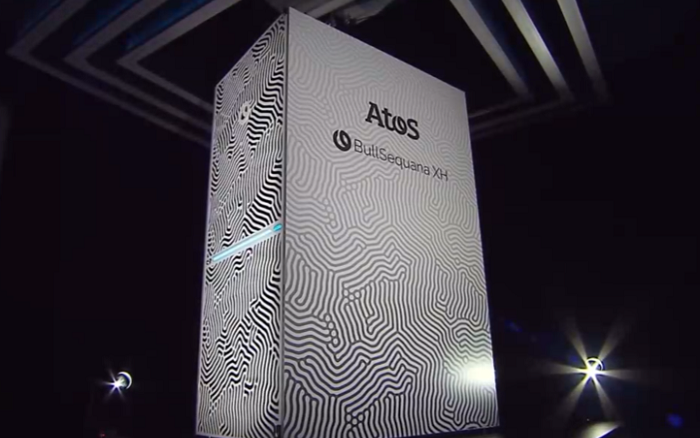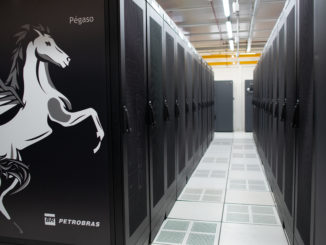
The acquisitions last year of Nimbix, Visual BI, and Ideal GRP by Atos signaled a more aggressive push by the European HPC vendor into the cloud and tech services space and coincided with a plan to expand beyond its legacy business and into such new growth areas.
The pickup of Nimbix was significant for Atos, bringing on board an HPC cloud platform provider with more than 10 years of experience delivering both cloud and on-premises high-performance computing capabilities and a background of executing thousands of cloud HPC projects in 68 countries.
Headquartered in Richardson, Texas, just outside of Dallas, Nimbix also gave the France-based company a greater presence in the North American market, according to Steve Hebert, the founder and one-time CEO of Nimbix and now vice president and global head of Atos Nimbix HPC Cloud.
“It makes [Atos] a more global brand,” Hebert tells The Next Platform. “In the same way that Amazon goes in and sells into every other market in the world. Even if there’s friction in some markets, they still do it. Conversely, Atos now with Nimbix is seeing the same type of capabilities like an HPE, selling into Europe or into foreign markets. With Atos, it’s coming from Europe over to North America. Nimbix is helping in that regard.”
Nimbix also is being counted as a key factor in Atos’ ambitious turnaround plan after a disappointing 2021 that saw revenues drop 3.1 percent year-over-year, to just under $11 billion. The plan likely will include splitting its operations in two, spinning out its fast-growing digital, big data and security units into a new company called Evidian and creating another company – keeping the Atos name – that would include legacy businesses like datacenter, digital workplace, unified communications and business process outsourcing, according to a proposal outlined last month.
CEO Rodolphe Belmer resigned after the proposal was announced.
How Atos will use Nimbix can be seen in its new Nimbix Supercomputing Suite, a collection of HPC offerings that can be delivered as a service, similar to efforts by other vendors like HPE, Dell Technologies, and Lenovo to offer their products in a cloud-like as-a-service way.
Nimbix has two key offerings, not only its cloud HPC service but also Jarvice XE, its platform software based on Kubernetes that converges HPC AI into a hybrid and multicloud offering.
“This was very much the early story with the acquisition of Nimbix,” Hebert says. “It was taking Atos BullSequana supercomputers, taking the Nimbix software and technology, and then being able to seamlessly integrate with any cloud or any compute endpoint you so choose as a customer. Whether it’s Microsoft, Amazon, Google, Oracle, any infrastructure in the world.”
The Nimbix Supercomputing Suite include three elements, the first of which is Elastic, essentially a reboot of the Nimbix Cloud, he says. Organizations can run their workloads on Atos’ platform and pay for the compute, storage, support or auxiliary services they use. There also is Dedicated, which is analogous to HPE’s GreenLake, Dell’s Apex and Lenovo’s TruScale as-a-service initiatives.
Dedicated is based on Atos’ BullSequana X series HPC servers that can be housed in on-premises datacenters with the organization having control of the full software stack similar to Amazon Web Services Outposts or delivered as a HPC bare metal-as-a-service that can burst over to public clouds or Atos Elastic service.
Nimbix Federated is the third element. The federated supercomputing-as-a-service essentially will enable public and private infrastructure operators to leverage the resources of each other to run their supercomputing, HPC and AI workloads. The compute zones and regions within a federation is managed via a central, unified consoles via Atos.
Atos is “the exchange provider to federate public, private and various supercomputing endpoints into a single federation for collaboration,” Hebert says. “For example, if you are a public supercomputer operator and you want to sell cycles to industry or you want to collaborate in a scientific domain with another supercomputing operator or science domain because maybe one has an Arm machine and another has an x86 machine, but you need to federate those two into a single platform that you can execute work on. That is what Nimbix Federated is delivering as a service.”
The environment is an exchange, where resources and services can be monetized, traded and bartered, with Atos playing the role of arbiter and broker. Built into the Atos offering is everything from accounting and multi-tenancy security and the vendor gets a percentage for delivering the platform for creating the federations. Underlying all this is the Jarvice XE software, the glue that keeps it together.
Data movement and security also are addressed via policies set up in each federation. Atos has APIs that will move data, but when it creates a federation with compute zones, the members of the federation have to have federated data as well, Hebert says.

“It has to be secured per whatever the rules of the policy of the federation are,” he says. “Only certain people may be allowed to access it or maybe it’s fully public. That’s up to the rules of a given federation to decide what they want to do. We will have multiples of these under the same sort of Nimbix Federated umbrella. As part of that, you have to have storage, you have to have your data live where the compute is and data needs to be able to move from the end user – maybe it’s on the other supercomputer side or maybe it’s someone that’s out in their home office, a scientist who’s working remotely. Those data endpoints will be part of the federated infrastructure, and that works the same way it does in our different cloud options as well.”
That said, it doesn’t mean the federated model will dictate that all the data needs to be in the cloud or all left on premises, he says. One model within the suite allows for the federation being based where the workload should live depending on federation rules.
Atos sees the federated model as a new vector in the exascale computing era, enabling scientific work at an accelerated pace. Atos was for many years a European IT consultancy until it bought supercomputer maker Bull’s systems business in 2014 for $840 million, immediately making Atos a player in the European HPC market. Earlier this year the company previewed the BullSequana XH3000 family of supercomputers that can be powered by Intel, AMD, Nvidia and SiPearl, which is developing the microprocessor for European supercomputers and comes with the latest generation of Atos’ liquid cooling technology.
Atos last month announced it was selected by the EuroHPC Joint Undertaking, which overseeing the development of pre-exascale and exascale systems in Europe, to build the MareNostrum 5 system at the Barcelona Supercomputer Center in Spain that likely will be based on the XH3000 system.
The XH3000 is “this great heterogeneous architecture that’s next-generation exascale supercomputing,” Hebert says. “We also want to, as Atos, point to the future of accelerating work horizontally as well. If we have a petascale machine in Region A and another petascale machine and maybe an exascale machine of some architecture, we want to federate those into a view that scientists from these different domains are allowed by policy to conduct work on. That’s the service that we’re launching.”
He estimates that there is about 40 percent of capacity in the supercomputer market that is not being used that now more likely will through the federated model.
“Here we are trying to fund, in our different countries and regions and in sectors, these next-gen supercomputers to do all this great science,” Hebert says. “Meanwhile, we have these wasted resources and we talk about green and we talk about environment and climate change. Well, you know what? Let’s do something about it. Let’s address this gap of these resources that are unused or underused.”
There also is the point that for many of the next-generation supercomputers, their funding justifications typically include collaborating with others in various industries and domains, a “requirement increasingly to do something in addition to just throw this out here for your scientists and engineers to use,” he says. “What are you doing to do X? What are you doing to seed industry with Y? This element in our portfolio helps address that trend. It’s not just leftover capacity. It’s being wired into next-gen systems to some extent. Fugaku, the Fujitsu-built Japanese supercomputer, is a good example where from the get-go they’re asking, ‘How do we enable industry collaborations on this new machine that we have spent hundreds of millions of dollars on?’”






Be the first to comment